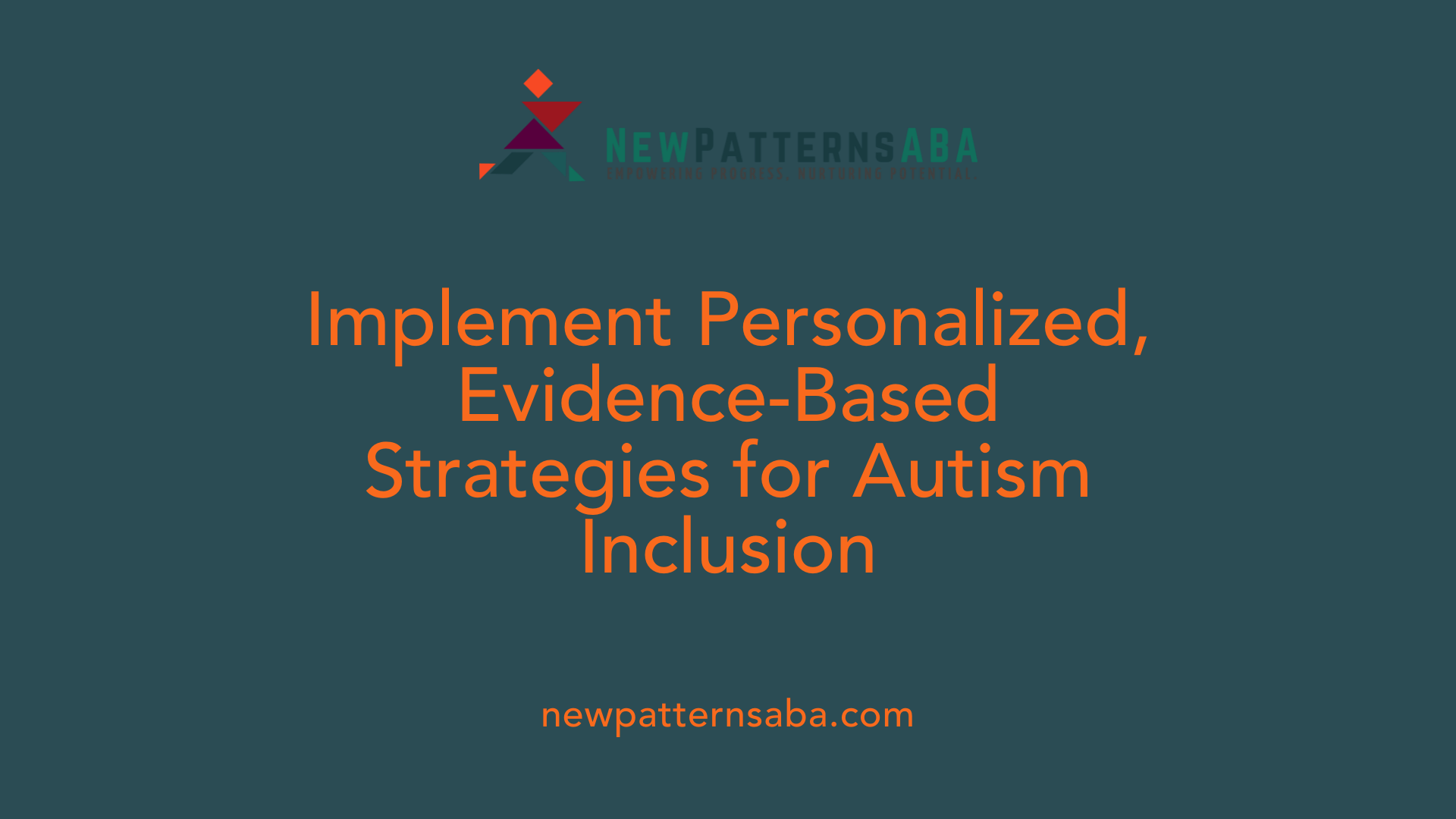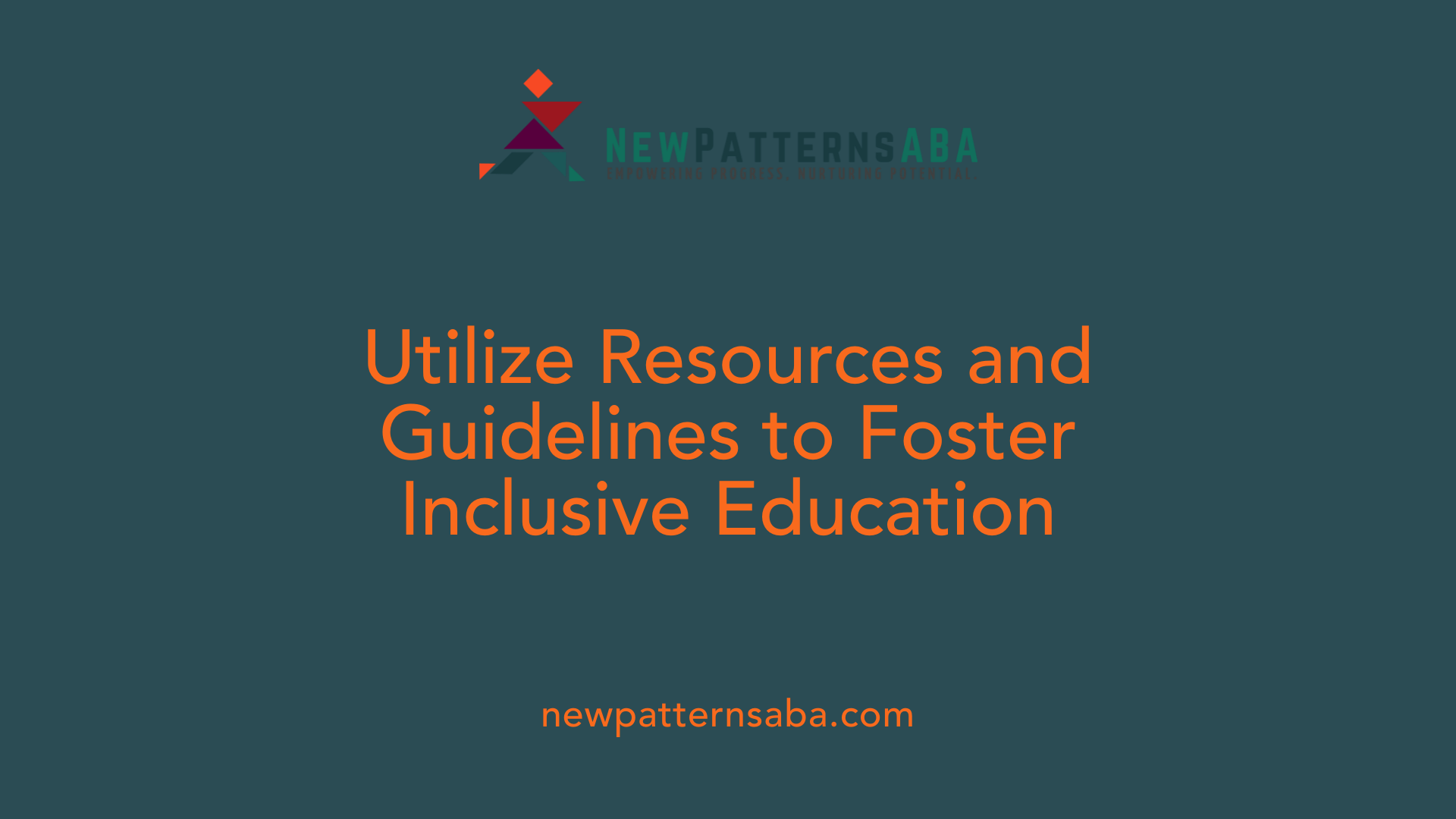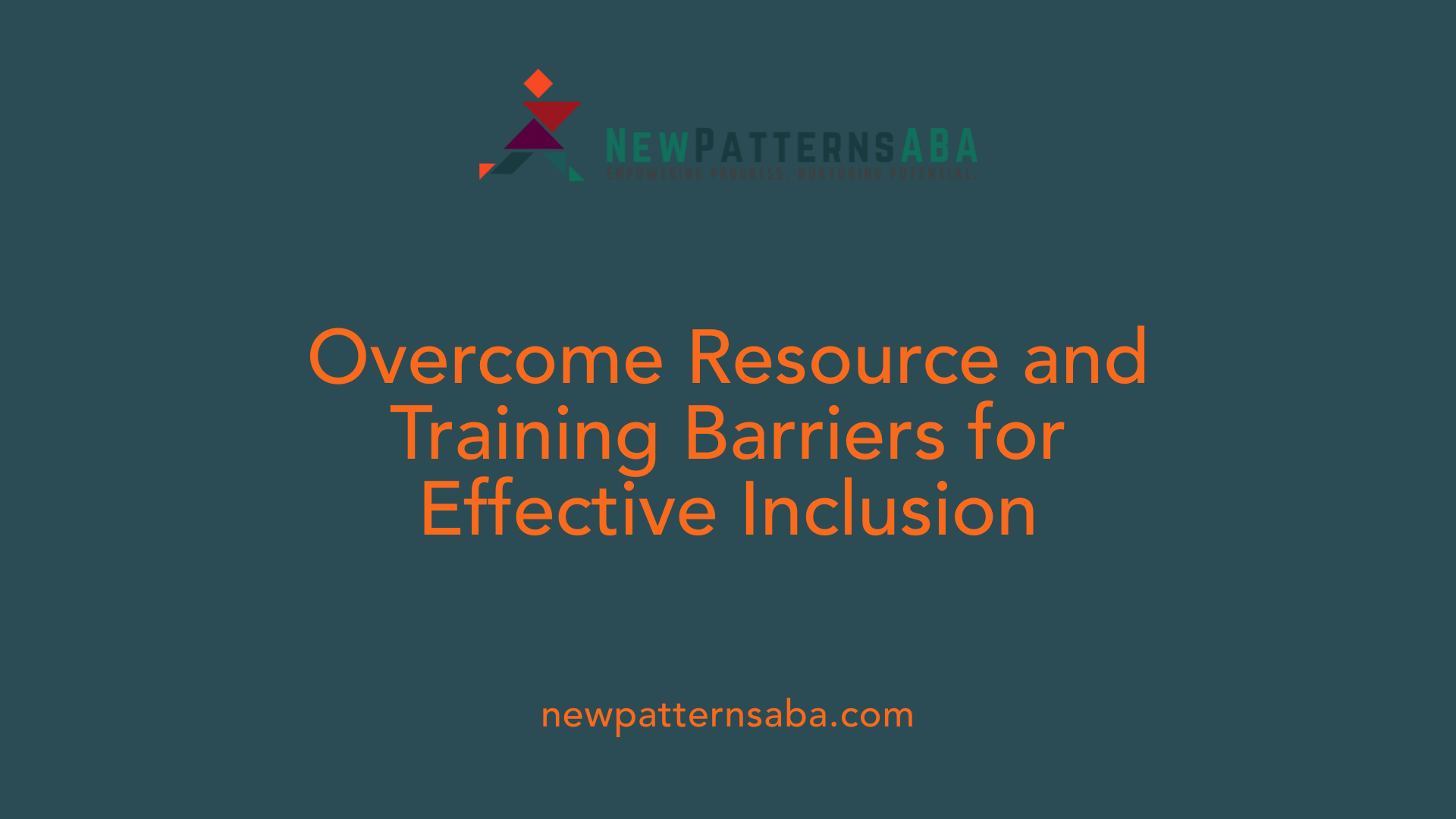Fostering Inclusion: Strategies for Supporting Students with Autism in Mainstream Classrooms
Understanding the Foundations of Classroom Inclusion for Autism
Inclusive education involves seamlessly integrating students with autism into general classrooms, providing them with the necessary supports to succeed alongside their peers. This approach not only promotes academic access but also cultivates social skills, understanding, and acceptance among all students. Effective planning and implementation hinge on principles rooted in understanding individual needs, evidence-based practices, and collaborative efforts among educators, families, and specialists.
Key Principles and Best Practices in Autism Inclusion

What are the principles and best practices for planning and implementing classroom inclusion for students with autism?
Planning and executing inclusive education successfully for students with autism requires a thoughtful approach centered on individual needs and strengths. First, comprehensive assessments help identify each student’s unique profile, guiding personalized goals that promote growth across social, communication, cognitive, and sensory domains.
Strategies such as visual supports (visual schedules, picture exchange systems), clear and simple language, and consistent routines are foundational. These tools help reduce anxiety, clarify expectations, and foster independence. Positive reinforcement techniques, including praise and reward systems, motivate students and reinforce desired behaviors, contributing to a supportive learning environment.
Implementing evidence-based models like TEACCH (Treatment and Education of Autistic and Communication-Handicapped Children) emphasizes understanding autism through individualized skill development. The Incredible Years program provides training and resources to support social and emotional learning, ensuring educators are prepared with effective strategies.
Universal Design for Learning (UDL) principles are integral, promoting flexible teaching methods that accommodate diverse learners. This includes offering multiple means of representation, engagement, and expression to meet varying needs.
Creating sensory-friendly classrooms with tools like noise-reducing headphones, adjustable lighting, and designated calming areas helps manage sensory sensitivities. Structured social groups, based on common interests, facilitate peer interactions and social skill development.
Partnerships with families, specialists, and support staff are essential. Regular communication, joint planning, and adherence to individualized education plans (IEPs) ensure consistent, tailored support. Ongoing professional development in autism best practices, along with fostering a respectful, inclusive school climate, sustain the effectiveness of inclusion efforts.
In sum, these practices—grounded in personalized assessment, evidence-based models, inclusive design, and collaborative teamwork—create a classroom environment where students with autism can thrive academically, socially, and emotionally.
Adapting Classroom Environments for Autism Support

How can educators adapt and modify classroom environments and teaching practices to accommodate students with autism?
Supporting students with autism in a classroom involves thoughtful adaptations to create a welcoming and effective learning space. One essential approach is establishing sensory-friendly areas equipped with tools such as noise-canceling headphones, fidget toys, and weighted blankets. These tools help students manage sensory overload and sensory sensitivities, which are common among autistic learners.
Visual supports play a crucial role in helping students understand routines and expectations. Visual schedules, picture cards, social stories, and charts provide clear, concrete guidance on daily activities and transitions. They reduce anxiety, promote independence, and support communication, especially for nonverbal children.
Effective modifications extend to communication and task structure. Using simple, precise language and breaking down tasks into manageable steps makes instructions clearer. Visual cues and prompts can reinforce learning and support participation. Additionally, offering choices—such as two or three options—can help reduce overwhelm and bolster decision-making skills.
Environmental adjustments also contribute significantly to an inclusive classroom. Maintaining consistent routines, minimizing environmental distractions, and carefully adjusting lighting, smells, and seating options create a predictable and comfortable atmosphere. Flexible seating variants, such as beanbag chairs or floor mats, can enhance student comfort and focus.
To stay on the forefront of effective practices, teachers benefit from ongoing professional development. Evidence-based strategies from programs like TEACCH and the Incredible Years provide frameworks for understanding autism and designing supportive teaching methods. These initiatives emphasize individualized learning, predictable routines, visual supports, and behavioral management.
In summary, by thoughtfully modifying classroom environments—through sensory considerations, visual supports, structured routines, and communication adjustments—educators can foster an inclusive setting. This enables students with autism to thrive academically, socially, and emotionally while gaining confidence and independence.
Creating Supportive and Inclusive Classroom Settings

What resources and guidelines are available for creating effective inclusive classroom environments for students with autism?
Creating an inclusive classroom that effectively supports students with autism involves a combination of practical tools, evidence-based models, and comprehensive policies. Teachers can utilize visual supports such as visual schedules, picture communication cards, and social stories to help students with autism understand routines and social expectations. These aids provide clarity and reduce anxiety by making daily activities predictable.
Many resources are grounded in research and best practices. For example, programs like TEACCH (Treatment and Education of Autistic and Communication related handicapped Children) offer structured teaching approaches that emphasize understanding autism and individualizing skill development. The Incredible Years Teacher Autism program delivers targeted training for educators, focusing on predictability, visual supports, and behavior management.
Professional development is crucial. Training manuals, workshops, and online courses help teachers learn effective strategies for fostering social skills and communication. Schools often rely on legal frameworks like the Individuals with Disabilities Education Act (IDEA), which mandates accommodations and supports to ensure students with autism learn in the least restrictive environment.
State-specific resources, such as Virginia’s inclusive practices guides, provide tailored recommendations, self-assessment tools, and checklists for educators. These tools assist in designing classrooms that meet individual needs while promoting inclusion.
To build a supportive environment, co-teaching arrangements, sensory-friendly spaces, and peer support systems are recommended. Regular collaboration with families and specialists ensures that supports remain relevant and effective.
By integrating these resources and adhering to established guidelines, educators can create classrooms that are accessible, engaging, and nurturing for students with autism, fostering both academic success and social-emotional growth.
| Resource Type | Description | Additional Notes |
|---|---|---|
| Evidence-Based Models | TEACCH, Incredible Years | Focus on understanding autism, individualized learning plans |
| Visual Supports | Schedules, picture cards, social stories | Aid comprehension and reduce anxiety |
| Training Programs | Professional development courses | Enhance teacher skills and confidence |
| Legal Frameworks | IDEA, Section 504 | Ensure rights and accommodations |
| State Guidelines | Virginia Department of Education resources | Tailored, practical advice |
| Classroom Strategies | Sensory spaces, peer groups, visual cues | Promote inclusion and engagement |
Implementing these resources within a framework of ongoing training and collaboration helps craft classrooms where students with autism can flourish academically, socially, and emotionally.
Supporting Social and Emotional Development

How does peer interaction and friendship building support autistic students?
Fostering positive peer relationships is essential for social and emotional growth among students with autism. In inclusive classrooms, group activities and social groups based on shared interests encourage interactions and help break down social barriers. Teachers can model and prompt appropriate social behaviors, using tools like social scripts and cues to guide interactions. These strategies help autistic children develop friendships, improve social skills, and feel more accepted within the school community.
What role do social scripts and prompting behaviors play?
Social scripts and prompting behaviors serve as valuable tools to teach and reinforce social skills. They provide clear examples of appropriate interactions, helping students understand what to do in various social situations. Teachers often use prompts, such as visual cues or verbal reminders, to encourage participation and positive behaviors. Over time, these supports build independence and confidence in social settings.
How can inclusive activities foster acceptance?
Inclusion thrives on activities that promote understanding and respect among all students. Participating in collaborative projects, games, and classroom routines that emphasize teamwork helps remove stereotypes and stigma. Teaching students about autism and individual differences enhances empathy and encourages positive interactions. Such activities create an environment where every student feels valued and included.
Why is teacher training and family collaboration crucial?
Teachers trained in inclusive strategies and autism awareness are better equipped to support their students' social and emotional needs. Continuous professional development ensures educators are familiar with effective methods, such as using visual supports and sensory accommodations. Collaboration with families provides insights into each child's preferences and triggers, enabling tailored interventions. Regular communication and joint planning foster a consistent support network that benefits the student's overall development.
Supporting strategies in inclusive settings
Implementing these practices requires a combination of personalized accommodations and collaborative efforts. Visual supports like schedules and picture cards help students understand routines, reducing anxiety. Sensory-friendly spaces and tools, including noise-canceling headphones and fidget toys, assist in sensory regulation.
In addition, positive reinforcement, such as praise and reward systems, motivates students and encourages desired behaviors. Structured routines and clear expectations promote a predictable environment where students can thrive.
Summary Table of Strategies for Autism Support in Inclusive Classrooms
| Strategy | Description | Benefits |
|---|---|---|
| Visual supports | Schedules, picture cards, charts to explain routines | Reduces anxiety, promotes independence |
| Sensory accommodations | Noise-canceling headphones, sensory tools, calm spaces | Manages sensory overload, self-regulation |
| Positive reinforcement | Praise, token economies, choice boards | Motivates participation, reinforces behaviors |
| Structured routines | Consistent schedules, clear expectations | Comforts students, supports transitions |
| Social skills interventions | Social scripts, prompts, group activities | Builds friendships, improves social skills |
| Family and teacher collaboration | Regular communication, joint planning | Tailors support, ensures consistency |
Providing ongoing training for educators, along with involving families and peers, creates an inclusive environment that nurtures social and emotional development for students with autism, paving the way for meaningful friendships and positive classroom experiences.
Addressing Barriers and Challenges to Implementation
 Implementing inclusive education for autistic learners involves navigating various considerations and overcoming potential barriers.
Implementing inclusive education for autistic learners involves navigating various considerations and overcoming potential barriers.
One of the primary challenges is resource limitations and staff training issues. Educational environments need properly trained educators who understand autism-specific strategies, such as visual supports, sensory accommodations, and behavioral interventions like Applied Behavior Analysis (ABA). Without sufficient training, teachers may lack the confidence or skills to effectively support autistic students, which can compromise inclusion efforts.
Environmental sensory challenges also pose significant difficulties. Many students with autism are sensitive to stimuli like bright lights, loud noises, and strong smells. These sensory overloads can cause discomfort, distract from learning, or lead to behavioral episodes. Creating sensory-friendly spaces, offering noise-canceling tools, and allowing sensory breaks can help manage these challenges, but they require environmental modifications and resource investment.
Environmental modifications and infrastructure adjustments are essential for fostering inclusivity. Simple changes such as dimmer lighting, flexible seating arrangements like beanbag chairs, and visual aids like charts and picture communication cards make the classroom more accessible. Additionally, establishing quiet zones and predictable routines can support students in feeling safe and reducing anxiety.
A significant barrier to implementation is the structural rigidity of some educational settings. School buildings or classrooms may lack the physical space or resources for sensory-friendly adaptations. This often necessitates collaborative efforts between administrators, teachers, families, and support staff to advocate for necessary modifications.
Research indicates that evidence-based practices, such as visual supports, structured teaching models like TEACCH, and social skills programs like the Incredible Years, are effective but still underutilized in many settings due to lack of familiarity or resources. Teachers need ongoing professional development to stay current with best practices for autism support.
In conclusion, successful integration of autistic students into inclusive classrooms depends on addressing staffing issues, providing sensory-aware environments, and making structural modifications. Continuous training, collaborative planning, and flexible approaches are critical to overcoming these barriers, ensuring that all students have equal opportunities to learn and thrive in supportive settings.
The Impact of Autism on Classroom Inclusion and Targeted Strategies
How does autism impact classroom inclusion, and what targeted planning can address these challenges?
Autism Spectrum Disorder (ASD) influences how students participate in classroom activities due to challenges in social interaction, communication, and sensory processing. Students with autism may experience difficulties making eye contact, understanding social cues, and managing sensory sensitivities such as loud noises or bright lights. These challenges can lead to feelings of social exclusion or bullying, which affect their self-esteem and overall participation.
Creating an inclusive learning environment requires thoughtful planning tailored to these needs. Teachers can incorporate visual supports like schedules, picture cards, and diagrams to help students understand routines and expectations. Using concrete, simple language and breaking tasks into small steps make instructions clearer, reducing frustration and anxiety.
Sensory-friendly spaces are vital. Providing tools such as noise-canceling headphones, fidget toys, and weighted blankets can help students manage sensory overload. Classroom modifications, such as adjustable lighting and varied seating options, further support comfort.
Professional development plays a crucial role. Training teachers on autism awareness, inclusive teaching strategies, and classroom management specific to autistic students enhances their confidence and effectiveness. Collaboration with special education professionals and families ensures interventions are personalized and consistent.
Fostering a positive school climate involves promoting understanding and acceptance among peers. Social stories, targeted social skills groups, and peer buddy programs encourage friendships and social integration. Emphasizing students' strengths and interests can motivate engagement and help build a supportive community.
By implementing these targeted planning approaches, schools can reduce the risks of social exclusion and bullying, creating a more welcoming and effective environment where students with autism can thrive alongside their peers.
| Strategy | Methods | Benefits |
|---|---|---|
| Visual Supports | Schedules, picture cards, charts | Enhance understanding and reduce anxiety |
| Communication Adjustments | Concrete language, personalized cues | Improve comprehension and reduce frustration |
| Sensory Accommodations | Noise-canceling headphones, calming spaces | Manage sensory overload and promote calm |
| Teacher Training | Autism-focused professional development | Better support and classroom handling |
| Social Inclusion Efforts | Group activities, social stories | Build friendships and acceptance |
Applying Evidence-Based Practices for Inclusion
What evidence-based approaches are recommended for creating inclusive and supportive classrooms for students with autism?
Creating an inclusive classroom that effectively supports students with autism involves a combination of strategies grounded in research and best practices. Visual supports, such as schedules, picture exchange systems, and social narratives, are fundamental tools that help students understand daily routines, expectations, and social situations. These visual aids reduce anxiety, increase independence, and facilitate communication.
Structured teaching approaches like TEACCH (Treatment and Education of Autistic and Communication-related handicapped Children) focus on understanding each student’s unique needs and promoting individualized skill development. Programs such as The Incredible Years emphasize predictability, visual supports, and positive behavior management, all tailored to foster social skills and emotional regulation.
Sensory integration techniques are vital, given that many students with autism experience sensory overload or sensitivities. Tools like gentle lighting, noise-dampening elements, and sensory tools such as weighted blankets, fidget toys, and noise-canceling headphones help create sensory-friendly environments. The use of Ayres Sensory Integration therapy can further support sensory processing needs.
Behavior management is most effective when it includes positive reinforcement strategies like praise, token economies, and First/Then systems. Prompting, modeling, and systematic prompting help guide appropriate behaviors, while intervention packages like social stories teach social skills explicitly.
To ensure consistency and effectiveness, ongoing professional development is essential. Training programs like the Incredible Years Teacher Autism program equip educators with current knowledge and skills. Maintaining fidelity in strategy implementation and tailoring interventions based on functional behavior assessments help meet individual needs.
The combination of visual supports, structured teaching, sensory accommodations, and positive reinforcement creates a supportive, inclusive classroom environment that empowers students with autism to thrive academically and socially.
| Strategy | Description | Purpose |
|---|---|---|
| Visual Supports | Schedules, picture cards, social narratives | Reduce anxiety, improve communication, increase independence |
| Structured Teaching | TEACCH, consistent routines | Promote individual learning, reduce stress |
| Sensory Techniques | Noise-canceling headphones, weighted blankets, sensory tools | Manage sensory overload and promote self-regulation |
| Behavior Reinforcement | Praise, token systems, social stories | Encourage positive behaviors and skill development |
| Teacher Training | Special programs like The Incredible Years | Keep educators updated on best practices |
Incorporating these evidence-based strategies supports the development of inclusive classrooms where students with autism can learn, socialize, and succeed alongside their peers.
Building a Culture of Inclusion and Acceptance
Creating a truly inclusive classroom environment for students with autism requires a comprehensive approach that combines evidence-based practices, environmental adaptations, collaborative planning, and ongoing professional development. By understanding individual needs, employing tailored strategies like visual supports and sensory-friendly spaces, and fostering a school climate rooted in acceptance and understanding, educators can significantly enhance the learning experience and social integration of autistic students. A commitment to continuous learning, resource allocation, and inclusive values ensures that all students, regardless of their neurodiversity, can thrive and succeed in mainstream educational settings.
References
- Effective Classroom Strategies for Teaching Students with ...
- 11 Ways to Build an Autism-Inclusive Classroom
- Inclusion Strategies for Students with Autism
- How general education teachers can support students with ...
- Getting Comfortable in the Inclusive Classroom: Supporting ...
- REFEREED ARTICLE The Benefits of Inclusion for ...
- How Autism Affects the Inclusive Classroom






